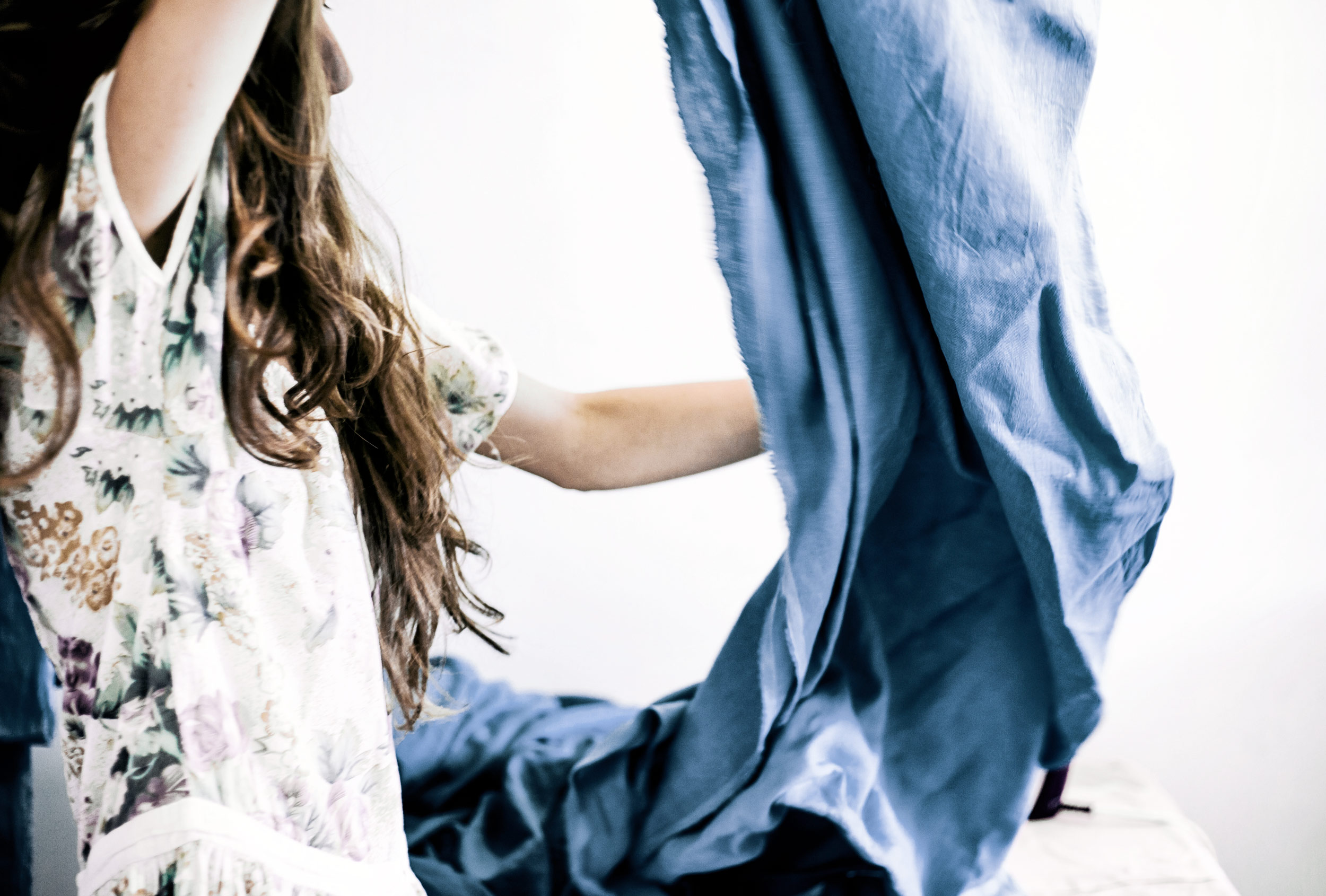SEWING BEE - beginners guide to sewing
So you’ve been watching the Great British Sewing Bee and you are inspired to give sewing your own clothes a try? That’s awesome! Welcome to Dot n Cross, the home of sewing classes in Cornwall. We love to share our knowledge of sewing and pattern cutting with newbies and we welcome you with open arms. Here we have listed a few things you will need to get started and loads of resources to help you learn.
A few things you’ll need
Fabric scissors – these should be sharp. Read a blog post here with cutting advice from an experienced sample cutter
Tape measure – useful for measuring yourself to make sure you’re making the right size garment, and for measuring fabrics
Seam ripper – for when things don’t go quite right, a home sewers best friend!
Pins – for pinning your pattern onto your fabric when cutting out, and for pinning together two pieces when you’re sewing
Sewing machine – obviously this is a big investment at the start of your new hobby. Why not ask a friend if you can borrow theirs first, or see if there are any sewing shops nearby that let you use theirs? Failing that, use a trusty needle and thread and sew it up by hand.
Patterns
You will need a pattern to tackle your first dress making project. A pattern is a paper template that you lay onto the fabric and cut out, so that you have the right shaped pieces. When you buy a paper pattern, they come with all the sizes printed on the same sheet of paper, so you will need to select which size you want to make, and then cut out (or trace) before cutting out in fabric. You can buy these from haberdasheries, online, or you can download them as a PDF and then stick them together.
Beginner patterns
The Fold Line have a great round up of beginner friendly patterns here
Tilly and the buttons (a previous GBSB contestant) has tonnes of beginner friendly patterns over on her website, and lots of great tutorials.
The Fold Line have all the indie patterns in one place – super handy! click here. And you can search by sewing level, simply put in absolute beginner to find the beginner friendly patterns they recommend.
Using a pattern
The Fold Line have an article on how cut out sewing patterns here
Tilly and the Buttons have an article on how and why to trace your pattern here
In the Folds have a blog post on how to print and assemble PDF patterns here
The Fold Line have a handy guide to decoding the markings on sewing patterns here
Indie pattern designers
I love that there are so many independent patterns being brought out these days. It means that there is a lot more choice, and indie designers are known for including much more detail in their instructions that traditional pattern companies – great for beginners! Check the sewing level on them before you buy though as some of these will have more complex garments.
Choice is great, when you think of the different design aesthetics of high street clothing shops, it makes sense that home sewers are also going to have different tastes. Indie designers usually have a look they are going for, whether that’s cutesy, minimal, functional, comfy. Find a designer you like or mix and match with a few to build your hand made wardrobe.
Some of my favourite indie pattern designers are:
Fabric
The type and quantity of fabric you will need will depend on your project. Most beginners start with a woven cotton as it doesn’t move too much, and therefore is easiest to sew with. Visit your local fabric shop to get some advice, or have a look at online shops. I would recommend visiting a real shop for your first few purchases, to physically feel the fabrics, and start to understand the differences in weight, weave, stretch and drape. I know it’s tempting (and we’ve all done it!), but you shouldn’t chose fabrics solely on colour as it might be the wrong type of fabric for the project you have in mind! Have a look at your shop bought garments at home to see what types of fabrics have been used for different garments.
Classes
If you want to get into dress making but it feels a bit overwhelming at home, why not take a class to get started? There are tonnes of brilliant classes available across the country. Try googling ‘sewing classes in [insert your location]’ to see what you find.
And if you’re based in West Cornwall, we’d love you to come along to one of our classes at Dot n Cross. We run lots of different classes, at all different skill levels, from absolute beginner up to advanced. Have a look if we’re running a class soon that you might want to come along for.
Sewing Meet ups
Want to meet local sewers to share hints and tips?
You can join your local sewing Facebook group. Search for ‘Sewing in the UK – [insert your location] to find the group closest to you.
And if there aren’t any sewing classes near you?
Why not try learning from a good old fashioned book?
Tilly and the Buttons has a brilliant book Love at First Stitch, which also includes 5 printed patterns, so you can start right away. More info here
Learn to Sew with Lauren (another GBSB contestant) here
Ahead of the curve by Jenny from Cashmerette is an amazing fitting resource for curvy sewists here
If books aren’t your thing, then there are literally gazillions of websites, you tube videos, blogs and tutorials you can find online to help with any sewing question you might have.





